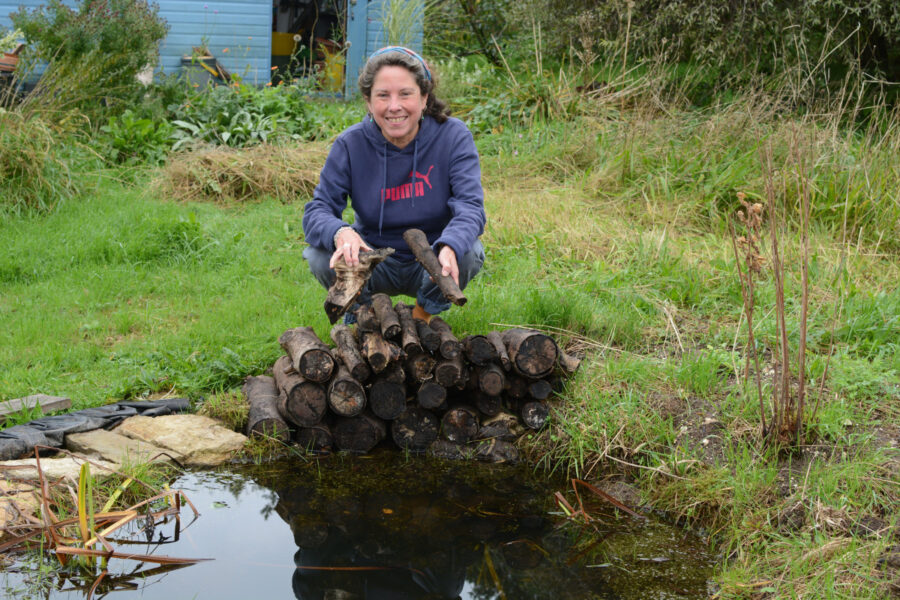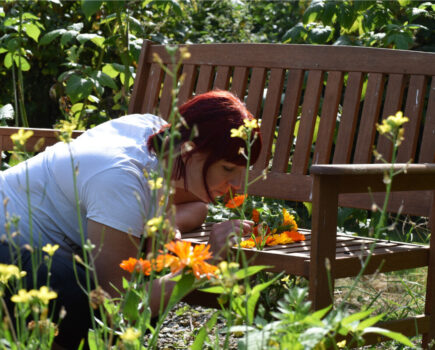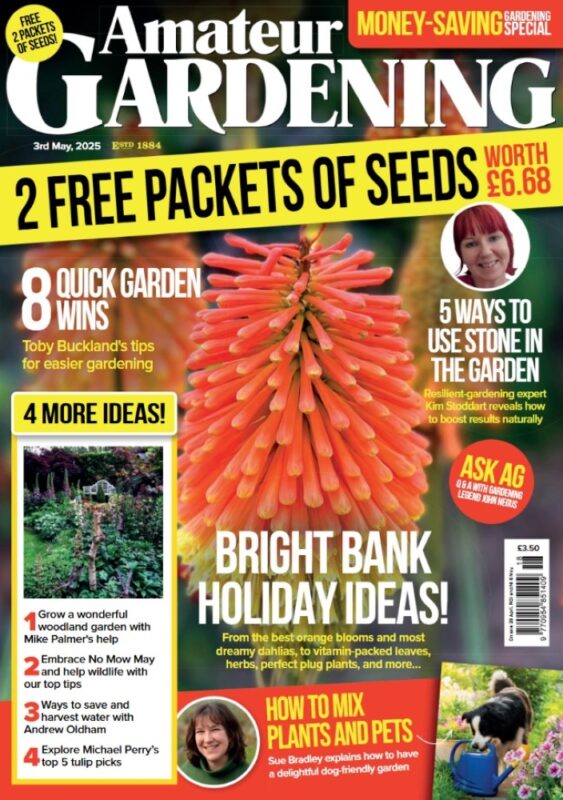Autumn is a good time for pond repair work
As well as the day-to-day jobs we tackle throughout the year, most gardeners have larger projects to complete that they either crack on with as soon as it needs doing, or talk about for a few weeks, procrastinate a wee bit longer and then get caught up with something else and ‘forget’ about it.
Guess which camp we fall into!
In our case, the job lurking in the shadows and occasionally tapping us on the back and saying ‘remember me?’ has been the pond or, specifically, the refurbishment of the pond.
We first added a wildlife pond to the garden six years ago and while we’ve never had frogs or newts, it has given us hours of enjoyment watching the mini-beasts within it, the dragonflies emerging and the birds flying down in spring to collect mud and moss from its margins to create the nests.
However, for the past two summers the water levels have been dropping dramatically, suggesting a tear in the lining, a lily supposedly for small ponds had taken over the surface and the whole thing was starting to look a bit sad.
The best solution was to start again from scratch, something that didn’t exactly fill us with joy as it would be hard work, but how would we go about it, and when was the best time to do it?
In the end we settled on early autumn, because the water level was already low, this time of year, along with the spring, are the best seasons for creating/altering a pond and we thought that autumn would be less disruptive to wildlife than the spring.
We started by scooping out the water and storing it, along with the pond sediment and plants, in trugs, barrels and an unused water butt. It was pleasing to see the water teeming with wee beasties including water beetles, larvae, water boatmen and water snails.
The next job was to remove the liner (and yes, we found a small tear) and reshape the pond, widening the shelving around the sides and creating a shallow ‘beach’ we would cover with pebbles, a place for invertebrates to hide and where where other insects, birds and garden wildlife could easily and safely drink.
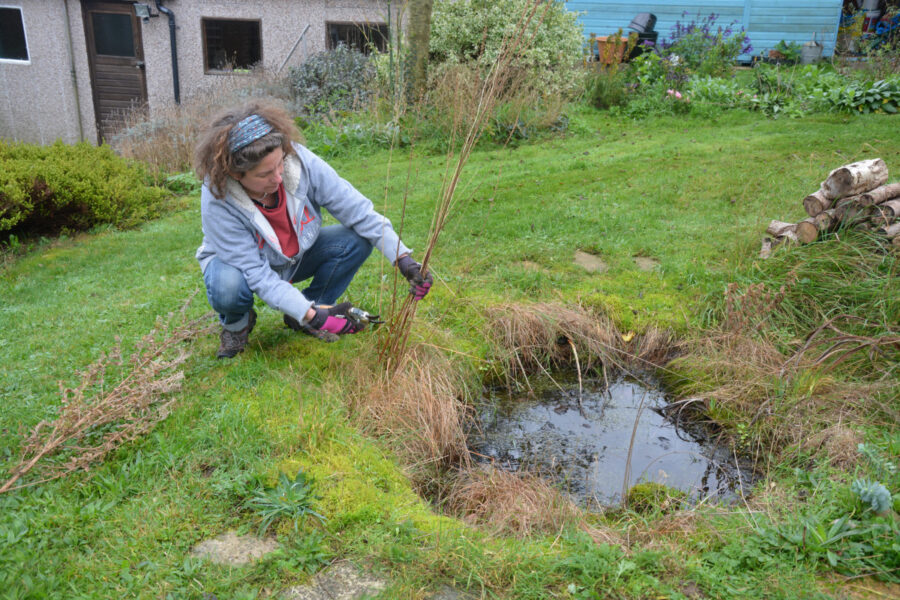
We edged the pond with a dry moat that we tucked the edge of the lining into, before anchoring it with soil. Large flat stones were laid around half the pond to cover the lining and the rest was edged with grass and replanted with marginal plants including stinking iris, loosestrife and flag iris.
The water and pond plants were carefully returned to their improved home and the final touch was the addition of a log pile at one end, after which we sowed some wildflower seeds in the surrounding lawn/mud.
The end result is a larger, healthier-looking pond that will hopefully be a ‘des res’ for lots of aquatic wildlife and an attractive facility for the rest of the garden’s inhabitants.
Working on the pond
Four issues to bear in mind

1. We reshaped the pond and added a ditch into which we tucked the edge of the liner before securing it in place with soil.
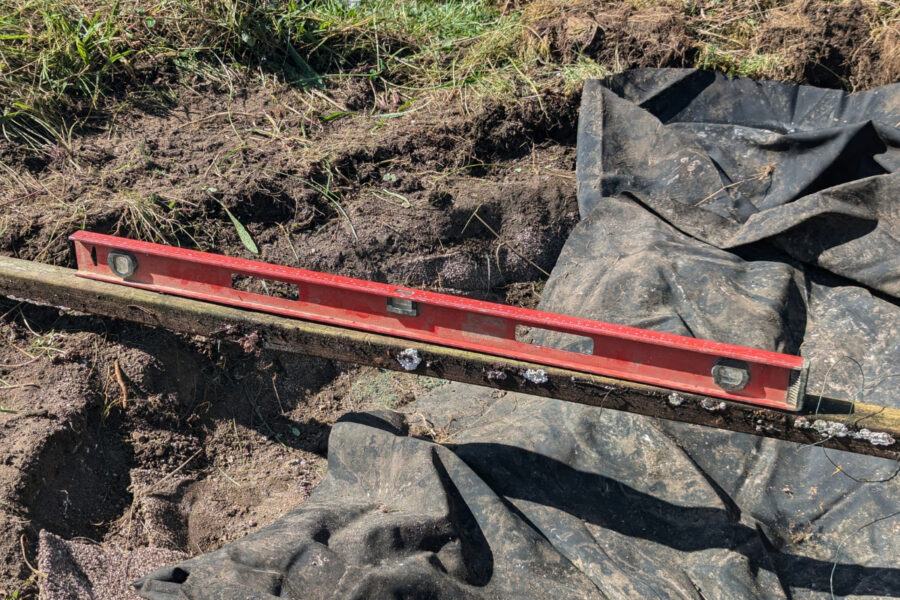
2. It’s important to get each side of your pond level, so we had to add and remove quite a lot of earth before we got it right!
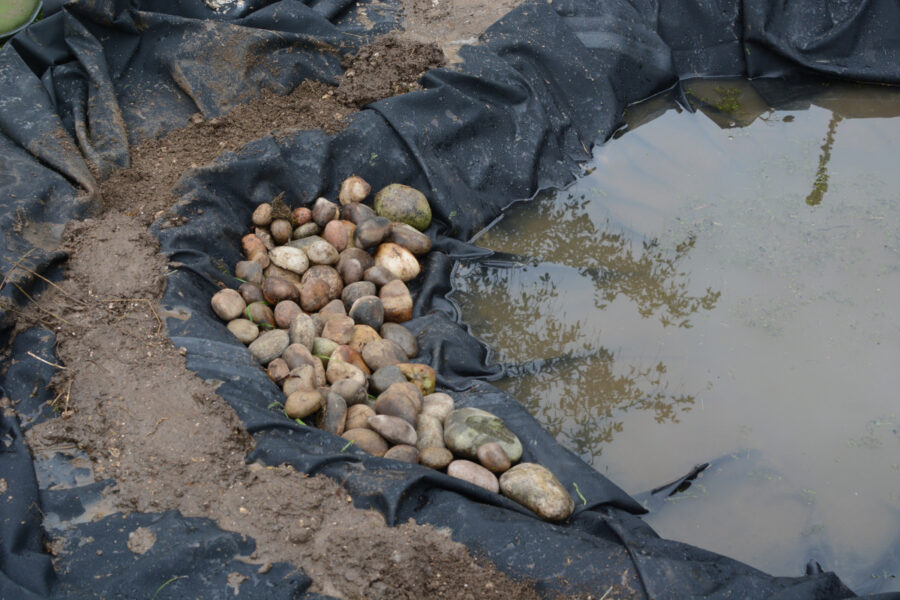
3. The pebble beach where garden wildlife and insects will be able to drink safely.

4. Store the plants and their attendant aquatic minibeasts in trugs of water while the pond is refashioned.
Find more tips, advice and articles like this at the Amateur Gardening website. Subscribe to Amateur Gardening magazine now

